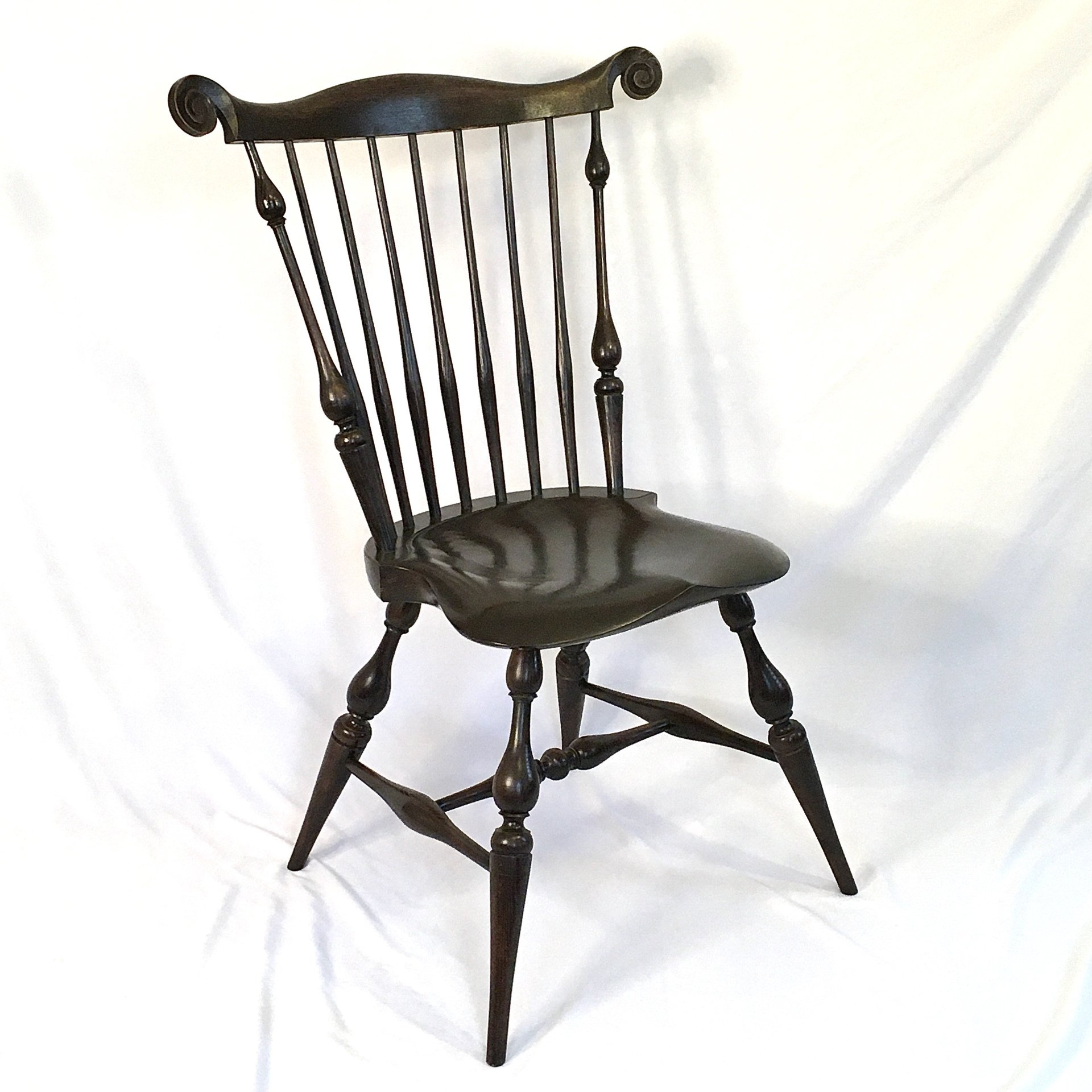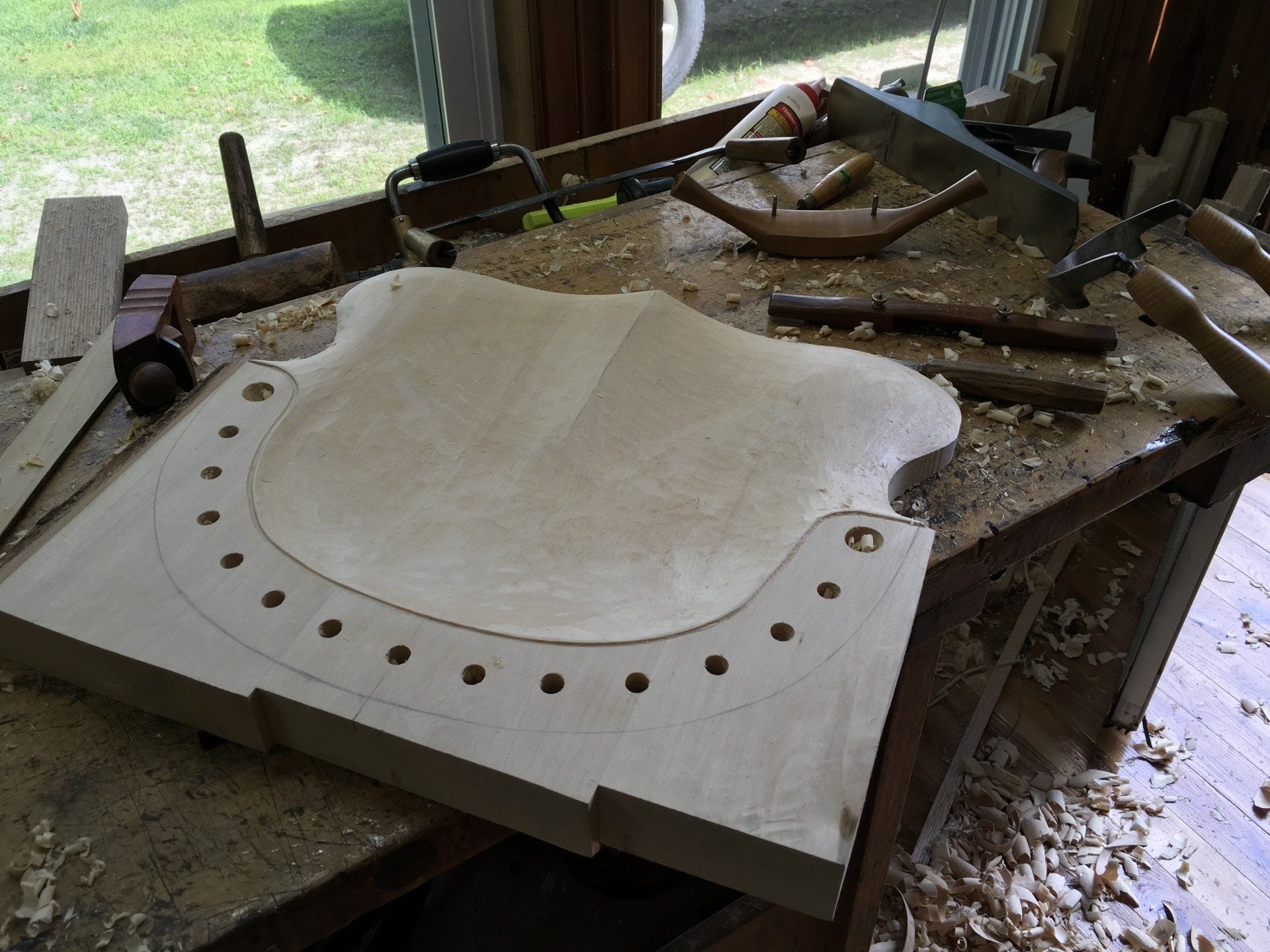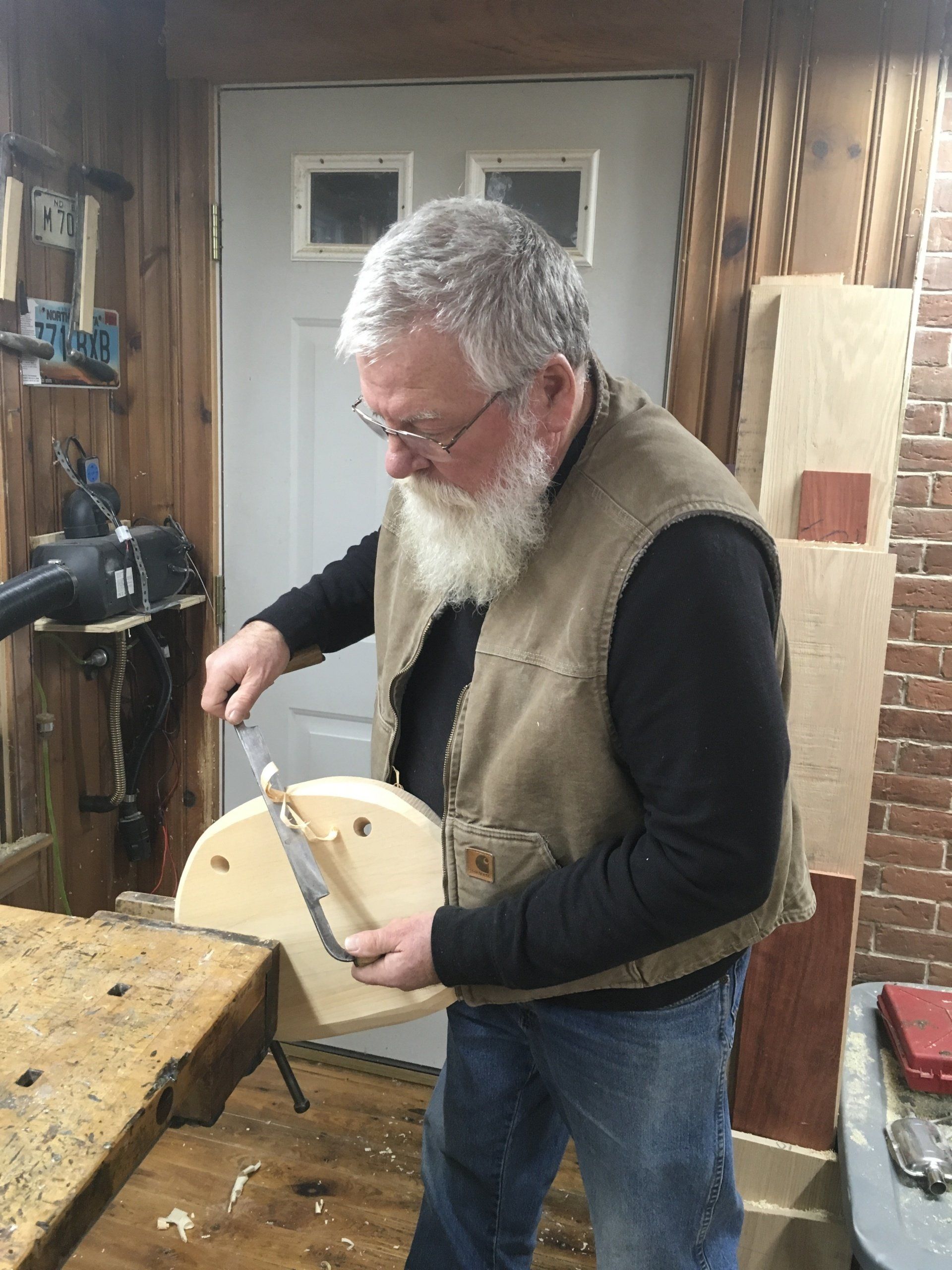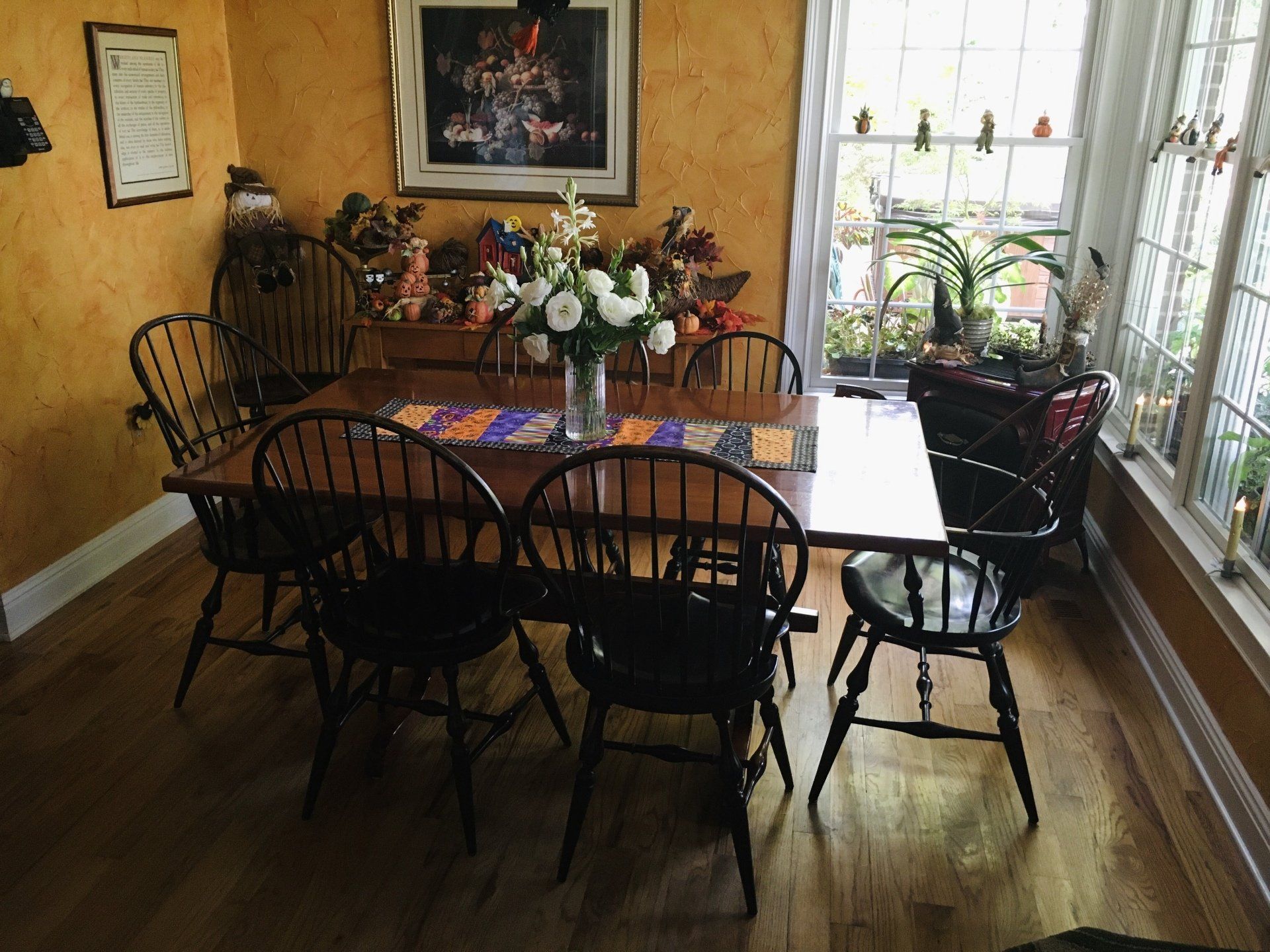About
David Wright, Wright Windsor Chairs
Slide title
Write your caption hereButtonNeed a Windsor Chair?
Reach out to us for a quick quote!
Contact Us
Why Wright Windsor Chairs?
Simple -
No Shortcuts! First and foremost, chair parts should be riven from the log! When you rive wood, just as when you split a bolt of firewood, the split follows the grain and assures there is no grain run-out. Therefore,
maximum
strength remains within the material instead of relying on added material bulk. This allows for a more elegant and pleasing appearance to the chair, while keeping its
strength and longevity.
Perhaps just as important as riving the wood, is the traditional wet / dry joiners used in all of my chairs. This type of joiner was the standard used by 18th Century chair-makers. I have found by observing many 200-year-old chairs that their critical stretcher to leg joinery is as tight as possible, even after all those years! Glue alone could not have held the joints of those chairs for this length of time. Not only does glue break down over time, but with seasonal changes comes regular expansion and contraction of the wood. These stresses placed on a chair using glued joinery, through its normal usage, will almost certainly experience joint separation and failure. Wet / dry joinery eliminates this concern and assures fail-proof joinery.
A Closer Look at Wet / Dry Joinery:
All leg, stretcher, and spindle tenons are placed in a kiln at 140 Degrees Fahrenheit for several days and are dried to about 2 to 4% moisture content - typically the least amount of moisture possible for the wood. Then at assembly, the tenons go into a mortise hole, which is typically dried to an air-dried state, or about 14 to 18% moisture content. As the mortises dry further, they shrink in size around the tenon and lock themselves into place. Even with seasonal differences in humidity and moisture content of the wood, the joint will NOT come apart. The joint will hold tight because the tenon, prior to assembly, was dried to the lowest possible moisture content and, therefore, cannot shrink to a smaller size, which would cause it to loosen within the mortise. As any humidity re-enters the wood, those joints become tighter.
About the Wood Shop
David Wright builds his Windsor chairs in his 12x16ft studio just off the kitchen of his circa 1830's home near Kezar Falls, Maine. Dave proudly makes all his Windsors from green locally sourced woods, harvesting the trees himself, riving and shaping the wood by hand.
Since 1987 when Dave constructed his first chair, he has used hand tools exclusively – specific to Windsor chair-making. As for any power tools, there are only a band-saw and a lathe in the studio. The band-saw helps in cutting contour shapes and the lathe, which is truly a hand tool, is needed to shape the legs and stretchers using gouges and skew chisels. In order to shape the seat, an in-shave is used to rough shape the seat, followed by a travisher to clean up the rough cuts, and ending with an assortment of spoke-shaves and hand scrapers to provide a finished surface. Dave uses his handmade shave horse to hold the wood while shaping. A work bench and the shave horse are the studio’s centerpiece. Many holes are bored in Windsor construction, all of which are done with a drilling brace using auger bits and other custom shaped drill bits for boring through-holes. The leg to seat mortise requires an additional step of reaming the straight hole socket to a specific angle, all done with a reaming tool. Prior to applying a finish, the wood surfaces are cleaned up and smoothed with spoke-shaves and scrapers instead of abrasive tools and sanders, which rarely perform the task as well.
At this level of craftsmanship, Windsor Chair-making is a considerably labor-intensive process. From choosing the choicest straight grain woods, riving logs to a manageable size, and using hand-tools to shape from start to finish, Dave is able to masterly craft Windsor chairs of the highest quality that are guaranteed to stand the test of time and last for generations.
FAQs
Got questions? We’ve got answers.
Ordering
-
What is the ordering process?
Prior to ordering it is best to call, E-Mail, or text to dicuss any detail needs, finish options, and current work loak status.
The majority of my clientele live in the New England and Mid-Atlantic regions. I work primarily in collaboration with period home builders, designers, and period whole house restoration firms, but all inquiries are welcomed!
-
How are the chairs finished?
Most of the windsors I build call for a painted finish. Most typically I will use milk paint colors to to achieve that period look. When placed in a period home this should be the finish of choice. Even in a modern home enviornment, a painted surface will unify the overall design or silhouette of the chair, highlighteing the magnificent windsor form.
I order from leading milk paint suppliers that together offer a vast array of color options. Chairs are offered unpainted too. Instead of talking about paint colors, now attention focsues upon what woods work best. Again, inquire about whichever finishes you prefer!
-
How long to build a custom Windsor chair?
Orders are typically out about 3 to 6 Months
-
How are they shipped?
Personal delivery within the New England area is available, with the only charge being fuel costs.
All other long distance destinations must be delivery F.O.B.. This method requires careful crating and packing. Estimated charges can be determined prior to shipping.
Furniture Care
-
Is any special care is needed?
We use cookies to ensure that we give you the best experience on our website.




